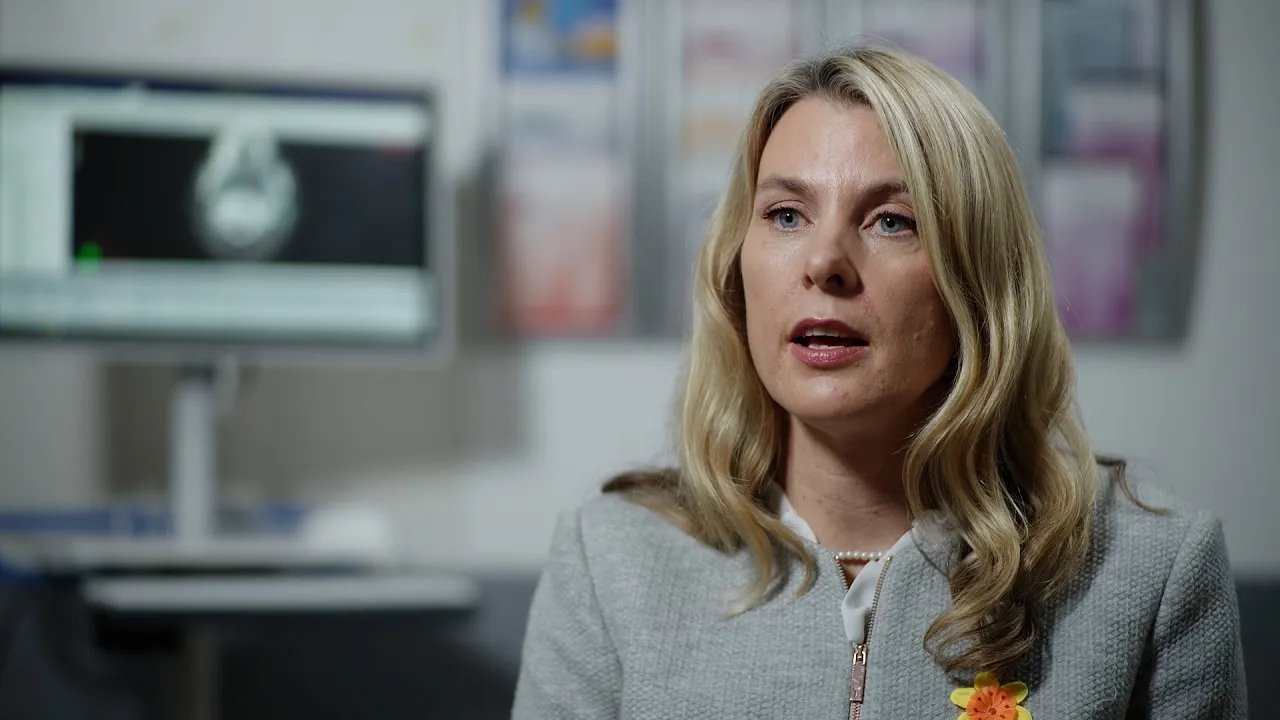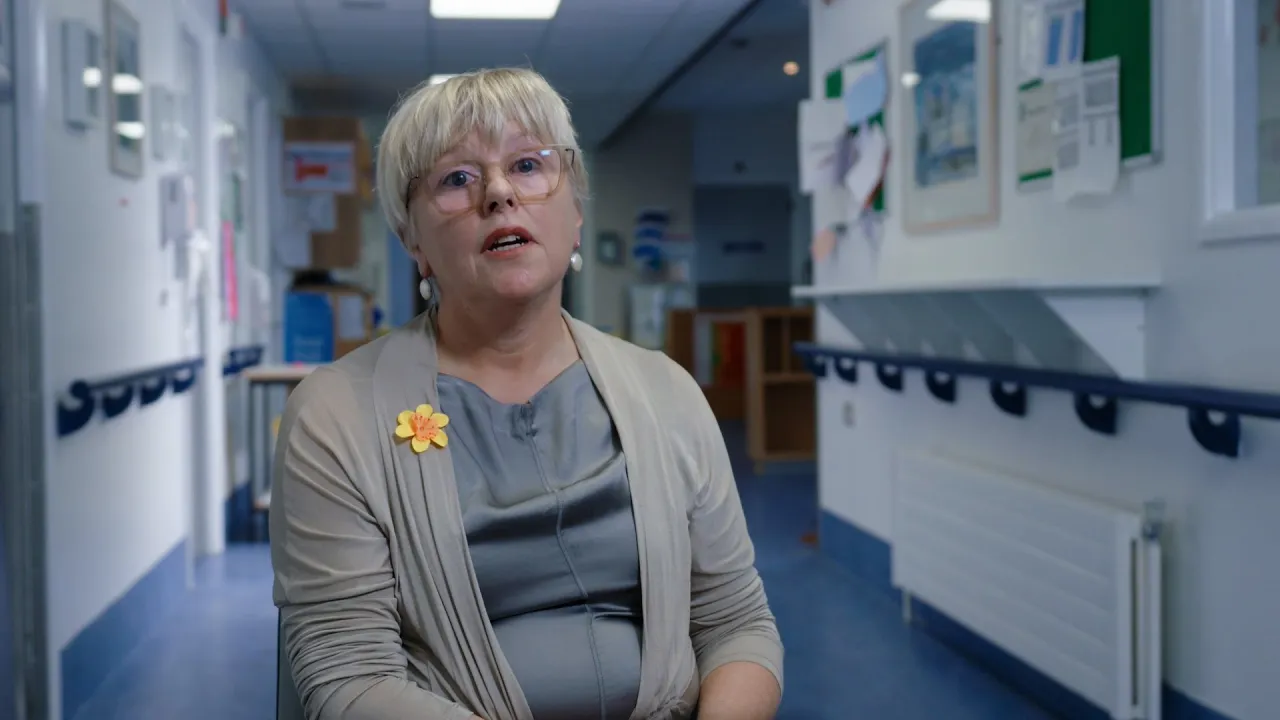Radiotherapy 2: How it works
This video describes what radiotherapy is and explains the different types of radiotherapy.
0:04
Radiotherapy, also called radiation treatment, is a cancer treatment that uses carefully measured doses of high-energy radiation to kill cancer cells and shrink tumours. Radiotherapy is aimed at and usually affects the part of the body that is being treated.
0:19
Radiotherapy requires careful planning and is given in specialist cancer treatment centres. It can be tiring, as you usually have to go to hospital 5 days a week for a number of weeks and this can be even harder if you have to travel a distance to get to treatment.
0:34
However, some patients may be able to carry on with work and other activities whilst on treatment.
0:40
Radiotherapy is used to destroy cancer cells whilst causing as little damage as possible to the normal cells. It is used for many different types of cancers in many parts of the body.
0:50
Radiotherapy is used to stop cancer or prevent it spreading, cure cancer, shrink cancer before surgery, prevent cancer coming back or recurring, treat cancer that has recurred or to relieve symptoms such as pain.
1:06
For example, we might use radiotherapy to make a tumour smaller and then it can be easier to remove with surgery. Or we may use it after surgery to kill any remaining cancer cells.
1:16
The total dose and number of radiotherapy treatments depends on: the size, location and type of cancer you have, your general health and other treatments you may also be receiving, such as chemotherapy or targeted therapies.
1:31
Each session of radiotherapy is between 15 and 45 minutes. If your treatment is any longer than this, your team will let you know.
1:38
Radiation does not hurt, sting, or burn when it enters the body. It is very much like having an ordinary X-ray or a scan.
1:45
Before radiotherapy, you will be asked to go to the hospital for a planning appointment. This is to plan the dose of radiotherapy you will need, and the exact area that needs to be treated will be marked. We will discuss this in more detail in the next section.
2:03
Sometimes you may need more than one type of treatment for your cancer. For example, you may have surgery and radiotherapy, and you may either have your radiotherapy before or after your surgery. Your doctor may recommend that you have both chemotherapy and radiotherapy. Chemotherapy can be given before or after your radiotherapy or sometimes at the same time.
2:24
During your radiotherapy, you will be monitored by your team and given medications to help with any side-effects that you might develop. Afterwards, your doctor will monitor you to ensure that you have recovered well from your treatment and that your radiotherapy treatment has been successful.
2:42
Radiotherapy is given in different ways, depending again, on your cancer type. When your doctor or a team member talks about radiotherapy treatments, you may hear some different types mentioned. Don't worry, they all work in a similar way, using radiation to kill cancer cells are reduce the risk of cancer recurrence.
3:02
It may be useful for you to be familiar with some of the following terms, which include: external beam radiotherapy – this is when the beams of radiation are aimed into your tumour or the tumour site. The beams come from a machine called a linear accelerator. This type of radiotherapy delivers smaller and very precise radiation beams. The radiation beams can be adapted or shaped to match your tumour size. Examples of external beam radiotherapy include stereotactic radiotherapy or radiosurgery.
3:35
Stereotactic radiotherapy or radiosurgery is a very technical, more precise and accurate way of giving radiotherapy. The beams are targeted at your tumour from several different angles, which combine to give a high dose of radiation.
3:51
Certain cancer types will require internal beam radiotherapy, also referred to as brachytherapy. This is when radiation implants are placed inside your body, on or near your tumour. These implants may be removed after a short period of time or may be also left in place for longer periods of time.
4:10
The aim of the internal or external beam radiation treatments is to achieve a more precise outcome with reduced side-effects to surrounding normal tissues.
4:20
It is important to remember that your doctor will know which treatment is best for you and will discuss in more detail, the type of radiotherapy that is specific and suitable for your cancer.







